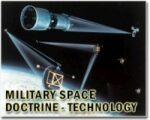The Royal Navy has launched sea trials of HMS Stirling Castle, its pioneering mothership designed to support autonomous mine countermeasure (MCM) operations. This marks a major milestone in the UK’s transition from traditional crewed minehunters to a modular force built around unmanned systems and digital command infrastructure.
From Sandown-Class to Autonomy: A Strategic Shift
HMS Stirling Castle represents the centerpiece of the Royal Navy’s Mine Hunting Capability (MHC) program—a long-term plan to replace aging Sandown-class minehunters with a more agile and survivable force centered on uncrewed platforms. The vessel is one of two converted commercial ships acquired by the Ministry of Defence (MoD) in 2023 to serve as dedicated platforms for deploying and recovering autonomous MCM assets.
Built originally as MV Island Crown, an offshore support vessel constructed by Vard Brattvaag in Norway in 2013, HMS Stirling Castle was retrofitted by Harland & Wolff in Belfast under a £40 million contract awarded in May 2023. The conversion included extensive modifications such as a bespoke mission bay for unmanned systems, upgraded communications infrastructure for remote operations, and enhanced navigation and C2 suites tailored for MCM missions.
Uncrewed Arsenal: RNMBs and Autonomous Toolkits
The core of HMS Stirling Castle’s capability lies not in its hull but in the suite of autonomous systems it carries. These include:
- RNMB Harrier: A remotely operated surface vessel designed to tow sonar arrays or deploy mine neutralization charges.
- Autonomous Underwater Vehicles (AUVs): Deployed for seabed mapping and object classification using synthetic aperture sonar (SAS).
- Towed Synthetic Aperture Sonar Systems: For wide-area detection of mines with high-resolution imaging.
- Mine Neutralization Systems: Such as SeaFox or equivalent expendable ROVs used to destroy identified threats.
The integration of these systems is managed via Atlas Elektronik UK’s ARCIMS (Autonomous Remote Control Integrated Mine System), which provides mission planning, data fusion, and remote control over multiple uncrewed assets simultaneously. These toolkits are modular and can be reconfigured depending on mission requirements—whether hunting historic ordnance or clearing modern influence mines.
A Platform Built Around Modularity and Survivability
The decision to use converted commercial vessels rather than purpose-built warships reflects a doctrinal shift toward modularity and risk mitigation. By deploying uncrewed assets from stand-off distances—often beyond the range of modern sea mines—HMS Stirling Castle reduces risk to personnel while increasing operational tempo through distributed tasking.
This approach aligns with NATO’s broader push toward collaborative autonomy in maritime MCM operations. Similar concepts are being pursued by France (SLAM-F), Belgium-Netherlands rMCM program with ECA Group/Thales solutions, and the US Navy’s Littoral Combat Ship-based MCM modules. However, unlike some allies who rely on newbuilds like Belgium’s City-class mother ships or France’s Ocean-class variants, the UK opted for rapid fielding through conversion—a pragmatic choice given budgetary constraints and urgent capability gaps following Sandown retirements.
Operational Testing Ahead of Full Deployment
The current sea trials will validate platform stability under load conditions typical of launch-and-recovery cycles for uncrewed vehicles at sea state three or higher. They will also test C4ISR integration between shipboard command centers and deployed AUVs/RNMBs using encrypted SATCOM links and line-of-sight RF comms.
If successful, HMS Stirling Castle will proceed into operational testing with the Royal Navy’s Mine Threat Exploitation Group (MTEG), likely operating out of HMNB Clyde or Devonport. Initial deployments may focus on training missions around British waters before supporting NATO exercises such as Dynamic Move or BALTOPS where interoperability with allied navies’ unmanned MCM systems can be tested under realistic conditions.
A Glimpse Into Future Naval Warfare
The introduction of HMS Stirling Castle signals more than just a platform change—it reflects a fundamental evolution in how navies approach undersea threats. By embracing distributed autonomy supported by flexible motherships like Stirling Castle, the Royal Navy positions itself at the forefront of next-generation naval warfare where manned-unmanned teaming becomes standard doctrine rather than experimental edge-case.
A second converted vessel is expected to join service soon under similar configuration. Together they will form an interim capability bridging toward full-scale deployment under the wider Maritime Autonomous Platform Exploitation (MAPLE) architecture envisioned by Defence Equipment & Support (DE&S). Long-term plans may see these capabilities integrated into larger combatants such as Type-31 frigates via containerized modules or offboard launch bays.










